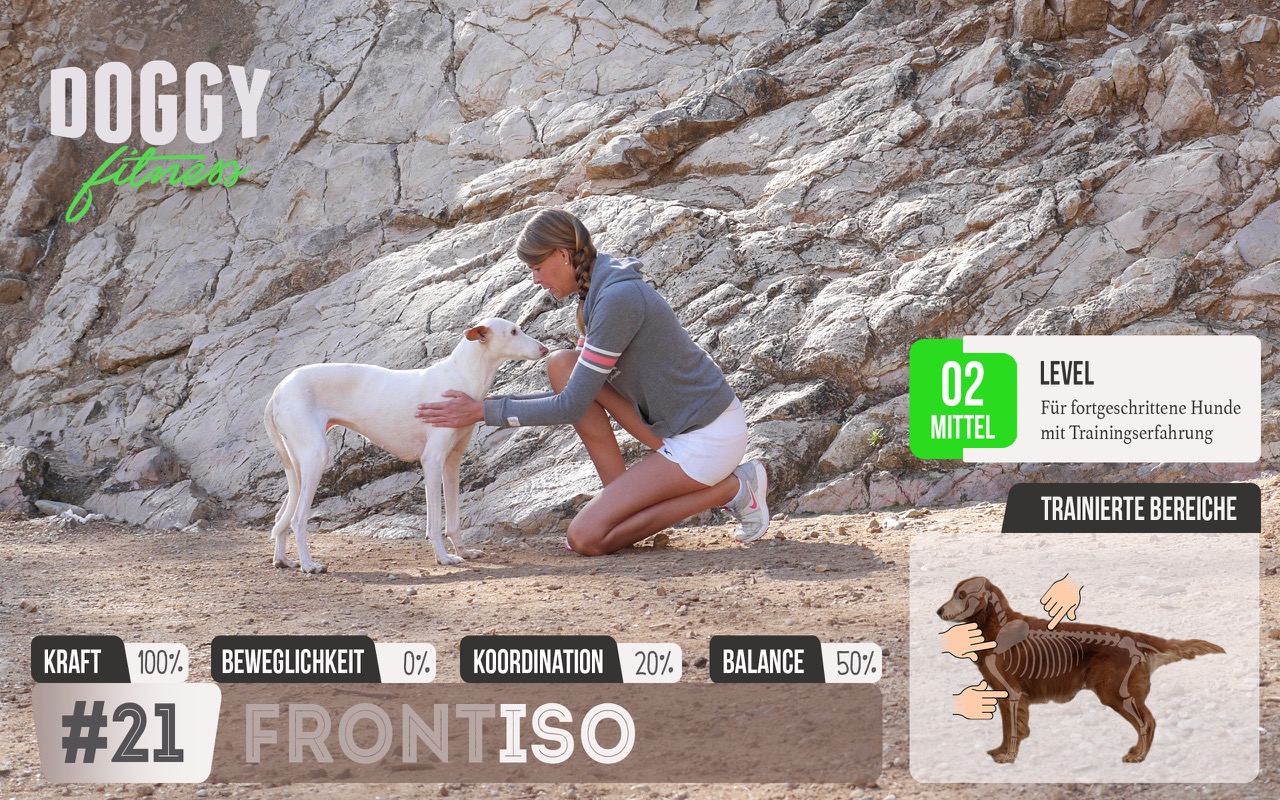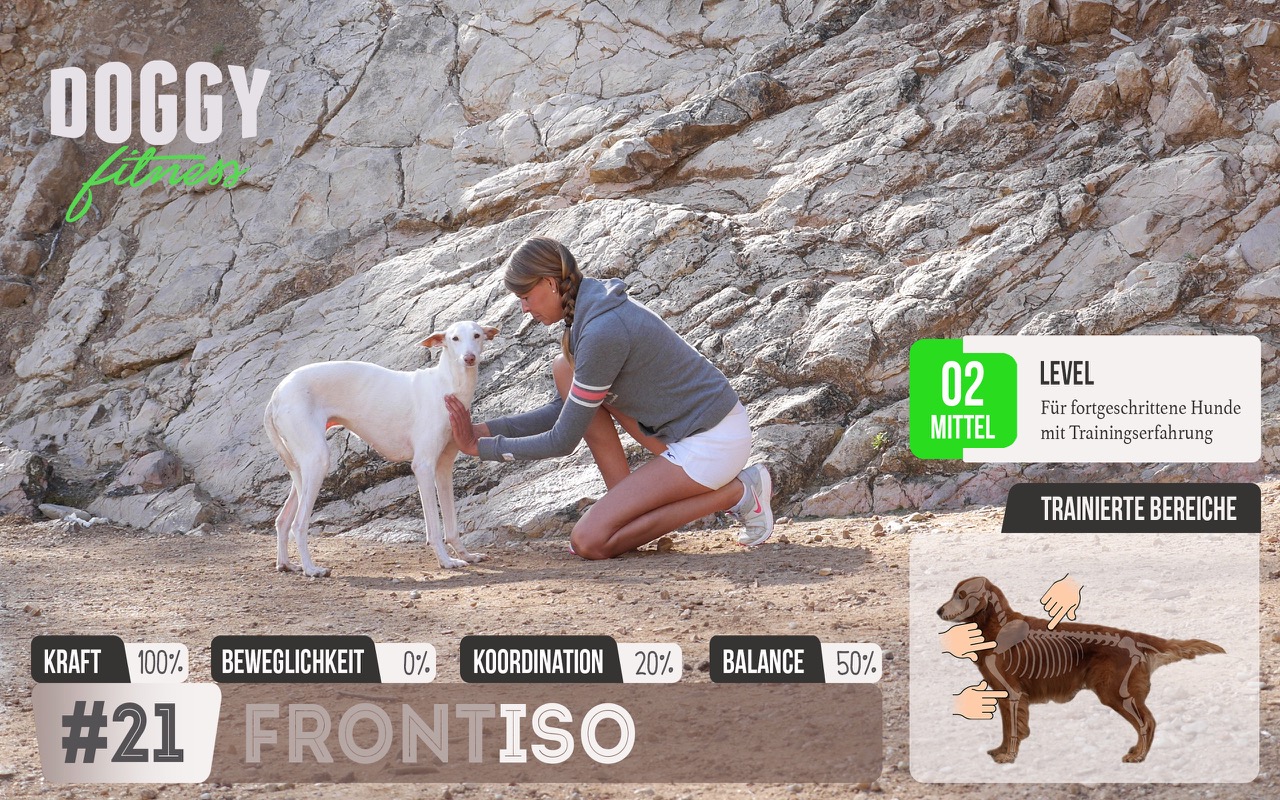Isometric exercises are often considered rather boring and often fall behind in exercise training for dogs. Especially in times when people are told that exercise training without the appropriate tools is not possible and is boring to death. Muscle training dog
At the same time, isometric training, even though it doesn’t look exciting (“you can’t see anything!”) or require active movement, is physically but also mentally demanding for our dogs. In addition to muscle tension, 100% concentration and focus on your own body is necessary.
I love isometric exercises especially for the following reasons: Muscle training dog
- The training is extremely effective
- You can train always and everywhere – without equipment and big preparation
- Isometric exercises can also be done if a dog cannot yet move a joint and you still want to exercise the affected run. In this way, you can counteract muscle loss and even promote muscle growth even before the load phase in rehab.
- It can be used on any dog – adapted to its physical needs – whether it is an older dog, a young dog, a sporting dog, with joint diseases or neurological diseases. There are simply no contraindications, i.e. reasons for which one could not work with isometric exercises.
Isometric exercises – an all-rounder
For the reasons mentioned above, I work a lot in my classes with isometric exercises to build muscle and to promote coordination, balance and body awareness and perception. Dog owner and dog can learn these exercises very easily and use them specifically and correctly – with a maximum training effect.
Why does isometric training work? Muscle training dog
Isometric exercises are a form of strength training. In the process, muscles are tensed and the tension is maintained. All this happens without the need for active muscle or joint movement. Your dog works exclusively against the pressure that you create with one hand or against gravity.
This again explains why this type of training is perfect for dogs with stiffened joints or in pain during a joint movement. Also for dogs with neurological diseases and paralysis they help very well to become mobile again and to perceive the body. However, isometric training is also used specifically for sporting dogs, as well as for older dogs.
Below I present you two variants of isometric training for the dog’s front legs and shoulders.
Always keep in mind that the exercises are very strenuous for your dog. Please stick to my training recommendation. You can find these isometric exercises but also many more (isometric) exercises in my online self-learning courses for dog owners.
Exercise #21 FRONT ISO muscle training dog
Trained areas:Musculature of the front legs, shoulders and trunk, chest musculature
Effect:Strengthening the muscles of the chest, front legs, shoulders and trunk. At the same time, balance and coordination are trained.
When not: No restriction
Equipment: for advanced e.g. balance pad, cushion, trampoline, compliant surface
Execution
Variant A:

First, squat in front of your dog so that you are looking at each other. Now place your hands on the sides of your dog’s shoulders. Apply light pressure to the shoulder with your left hand until you feel your dog tense the muscles and resist. Hold this position for the time indicated in the training recommendation without rebounding or increasing pressure. Slowly release and apply light pressure to the other shoulder with your right hand until you feel your dog tense the muscles and counter. Hold this position again for the time indicated in the training recommendation and then slowly release.
Variant B:

You squat in front of your dog again, so that you look at each other. Now place your hands on your dog’s chest and apply light pressure as if you were pushing him away from you. Hold the pressure again for the time indicated in the training recommendation.
It is important that the pressure you apply is very fine and never happens in a jerky way. Give your dog a chance to loosen up in between.
Variation
If your dog is confident with the exercise, you can also do it on a soft surface such as a pillow, balance pad. This significantly enhances the training effect.
Training recommendation muscle building dog muscle building dog
Level 1
Frequency: 3-5 x weekly, repetitions: 3 x per grip Duration: 3 sec. each. Per handle
Level 2
Frequency: 3-5 x weekly, Repetitions: 3-5 x per grip Duration: 3-5 sec. each. Per handle
That sounds terribly boring and so not at all exhausting? Try it with your dog and watch how he has to concentrate to react to the pressure with your hand!
You have questions about the exercises? Then feel free to leave me a comment or send me an email! I will be happy to help you! Here you will find instructions for isometric muscle training for the hind legs and lower back: ISOMETRIC TRAINING HIND LEGS & BACK
Muscle Training Dog Muscle Training Dog Muscle Training Dog
Dieser Beitrag ist auch verfügbar auf:
Français (French)
Deutsch (German)
Español (Spanish)
















